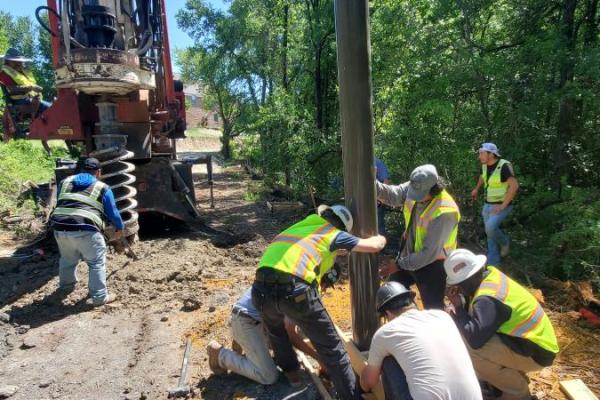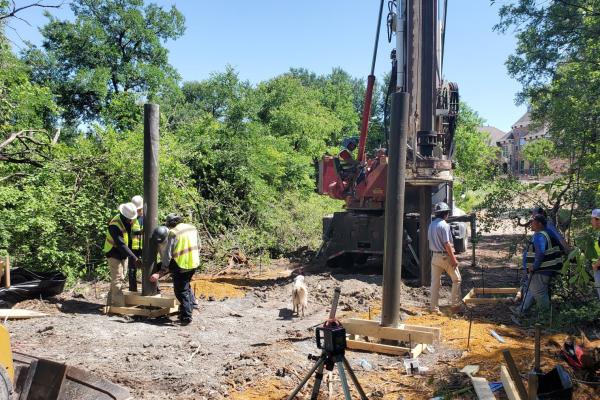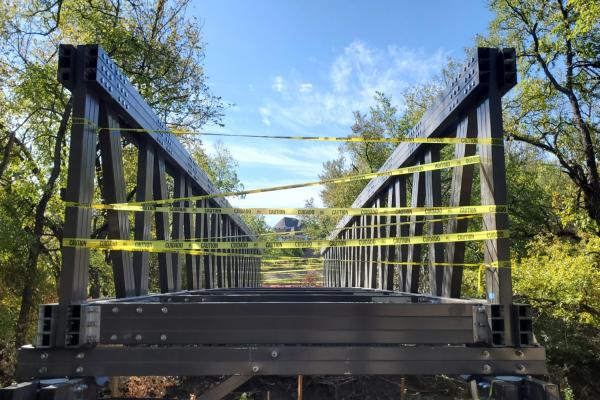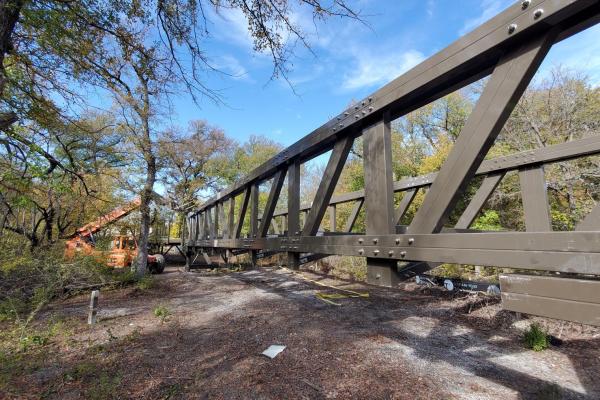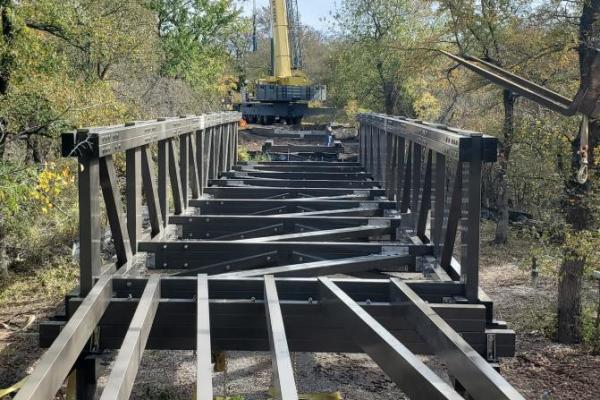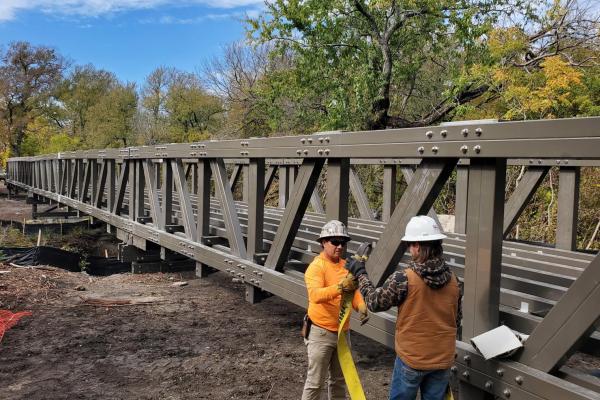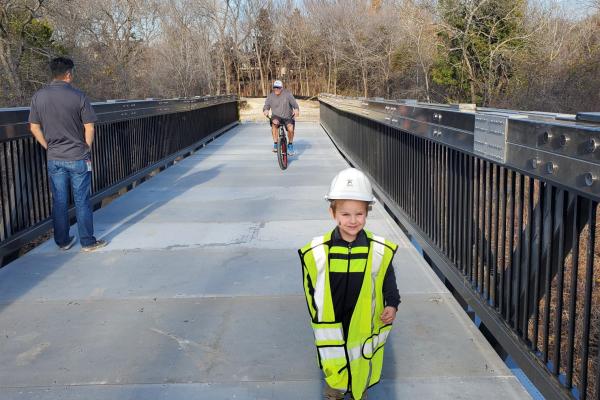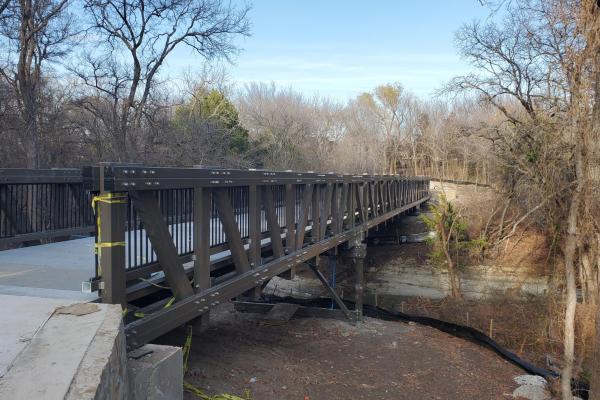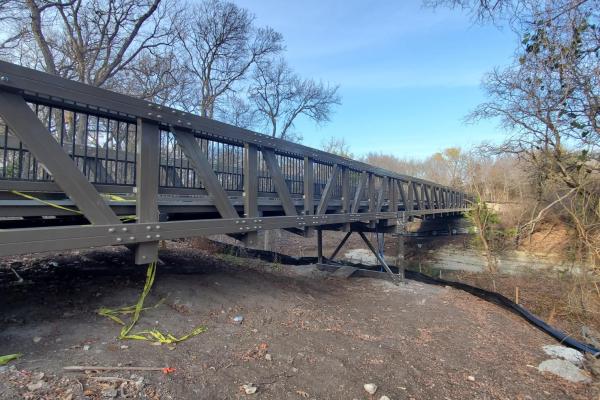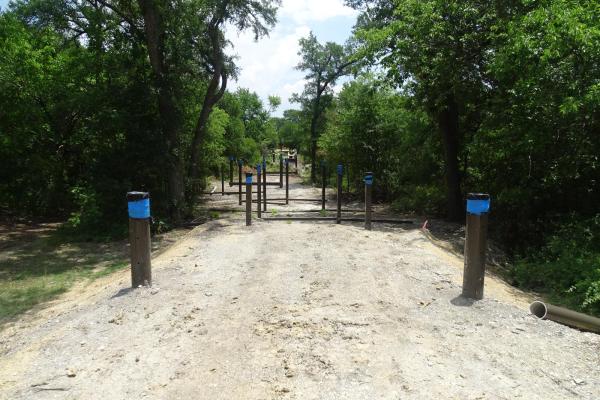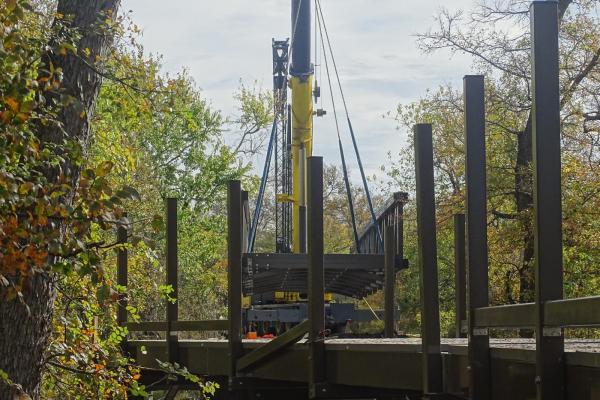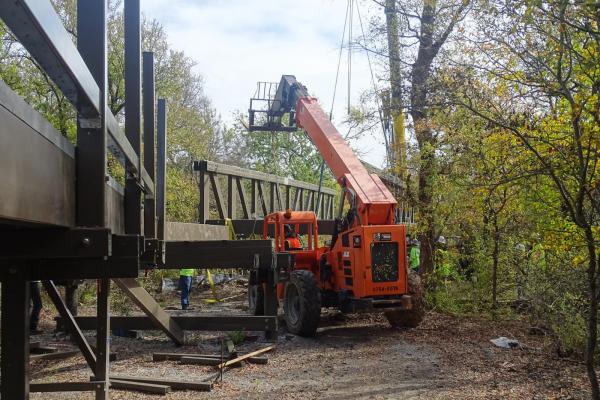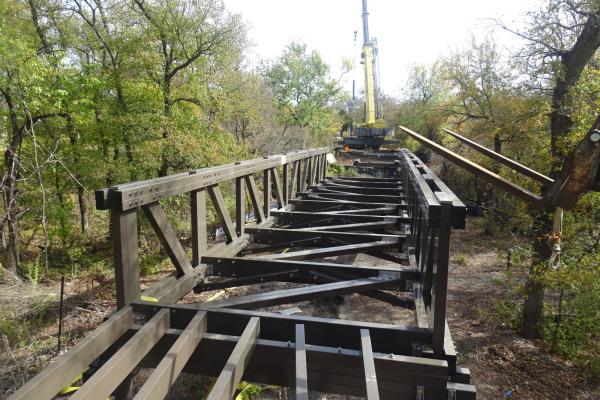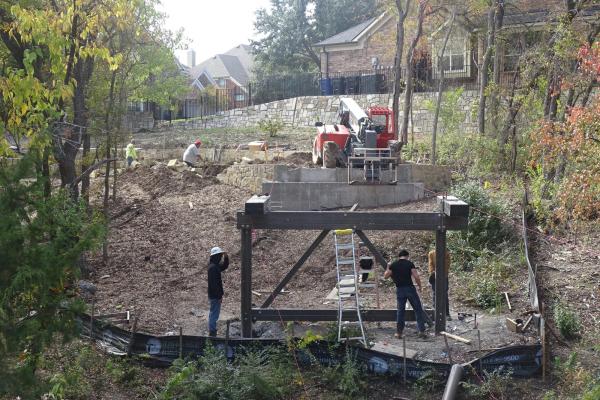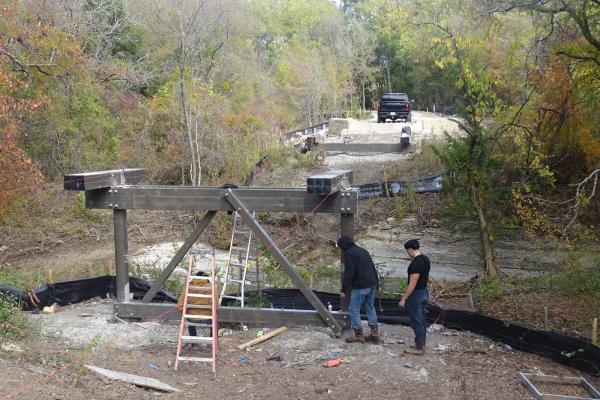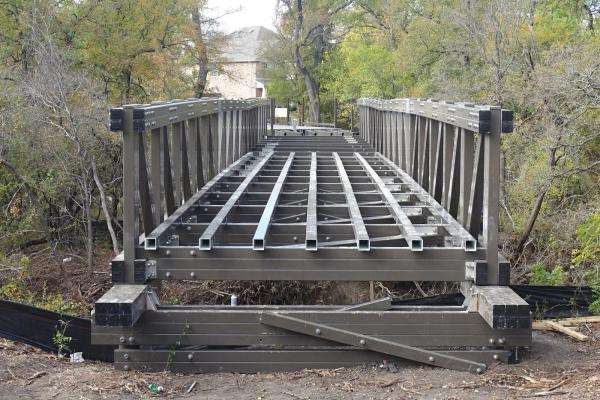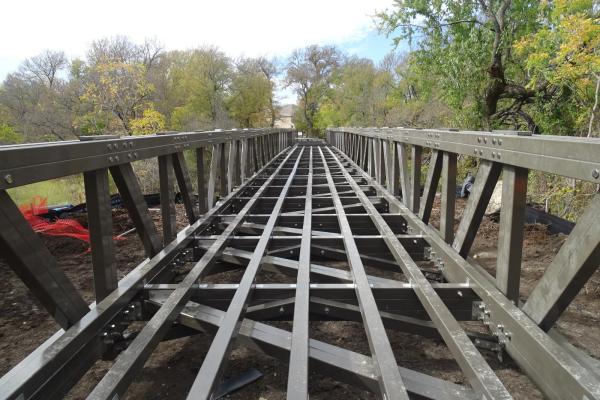Read on to discover how architects in Texas, USA reduced the environmental impact to the City of Frisco’s floodplains by choosing to construct the Dominion Trail out of Fibre Reinforced Polymer (FRP) instead of traditional building materials.
Water surface elevation modelling on floodplains in Texas, USA was significantly reduced by constructing the City of Frisco’s new Dominion Trail pedestrian bridges out of Fibre Reinforced Polymer (FRP) structural profiles instead of traditional building materials.
Texan landscape architects, Halff were engaged by the city to provide 3.65 metre wide shared-use path that worked in with the existing trail networks including three crossings; ad they needed to limit the rise within the 100-year floodplain.
Project Manager, Justin Marston said they were facing a 45cm rise in water surface elevation using 610mm concrete piers for the segmented pedestrian bridges; which he said was unacceptable and they needed to come up with a better solution.
“We needed to do something that was strong, something that was durable, something that was lightweight, cost effective, something that looked good, was easy to work with and was able to reduce impact within the floodplain.
“So that’s when we started looking into Fibre Reinforced Polymer (FRP); and it started checking all of the boxes that we needed. It’s high strength, lightweight, looks good, has non-corrosive properties and a long lifespan; and we were actually looking at using FRP specifically for the boardwalk so there’d be good synergy between the boardwalk sections and bridges.” – Justin Marston, Landscape Architect and Project Manager.
“We talked to the manufacturers, Wagners Composite Fibre Technologies (CFT), and they were confident they could do spans up to 30-metres with FRP, so we started to work with them. And basically the lighter weight materials, we got significantly smaller piers from 127-228mm and it was able to carry a vehicle.
“So we started running the hydraulic analysis and so when you go from 610mm to 228mm piers we saw a 62% reduction in the surface area of the piers within the floodplain. So now you’re going from 4.3 metres of blockage within the floodplain to 1.6 metres of blockage. So, when we ran these calculations and these hydraulic models, we only got a 127mm rise in the floodplain, which was a 72% reduction to the water surface elevation comparing concrete piers to these 228mm FRP piers.” – Justin Marston.
Existing utilities also provided significant challenges to Halff in the design and construction of Dominion Trail.
“There was a 1220mm sanitary sewer pipeline and the site was surrounded by private property owners; with all the houses around the area and as much as people love their land here in Texas and they really wanted the trail, just not all of them wanted it next to their house, so we had to go through several different design phases to where we were looking for the best route for both feasibility as well as which property owners would be impacted.
“We had to consider how these structures would affect the utilities. And if you put something over the utilities would it have to be replaced if they needed to get in and work on the lines? How much equipment and what size of equipment would you need to bring in to make this possible?”
Join Wagners CT as we explore how Texan landscape architects, Halff, planned and designed upgrades t the City of Frisco’s 2 kilometres Dominion Trail; minimising construction costs and environmental impact to the flood plains through the selection of FRP structural profiles.
Guest speaker is landscape architect and project manager, Justin Marston with the first 30-minutes of the presentation dedicated to discussing the client’s needs and solutions found for the project, followed by 15-minutes of interactive Q&A.
